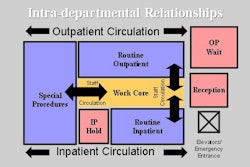Professional Medical Insurance Services
In the past three years, several medical malpractice carriers with A- or higher ratings have been rapidly downgraded. The carriers have subsequently filed for bankruptcy or gone into liquidation. As a physician, you may be puzzled by what goes into calculating the insurance company ratings: If an A-rated company fails, what good are ratings and how can you rely on them? What is the importance of an A rating, and exactly what do the ratings tell you about a malpractice carrier?
Numerous insurance and financial firms publish ratings on virtually all insurance companies, using a variety of formulas to establish the ratings. Fully comprehending some of these formulas requires an in-depth knowledge of the insurance industry as a whole.
In this article, the focus will be on the ratings published by A.M. Best Company of Oldwick, NJ, often the first referred to and the most commonly known outside the insurance industry.
For example, Best’s Debt Ratings provide an opinion for the credit marketplace as to an insurer’s ability to meet its financial obligations to security holders. Best’s Financial Strength Ratings provide an opinion of an insurer’s financial strength and ability to meet ongoing obligations to policyholders. In plain language, the ratings reflect the probability that the insurer will be there to pay claims when required.
What do Best's ratings mean?
The highest, and most accepted, Best's ratings are "Secure Ratings:" A++ and A+ (superior), A and A- (excellent), B++ and B+ (very good).
Ratings of B and B- (fair) to D (poor) are generally unacceptable to healthcare institutions and other companies.
Other ratings are E (under regulatory supervision), F (in liquidation), and S (rating suspended).
There are "Not Rated" categories (NR) that mean a company has not attained a rating for a variety of reasons, such as not having been in business for at least five years. It does not necessarily mean the company is unsound.
The ratings and a very brief statement on the ratings are available at no charge on the A.M. Best Web site, www.ambest.com. More detailed information can be purchased online.
The Best Company’s reports provide detailed business reviews, as well as extensive financial data and analytical commentary, product and geographic information, company history, and the rationale supporting the financial strength rating assigned by A.M. Best.
These reports are updated on a regular basis based on input and analysis performed throughout the year.
Breaking down a report
The A.M. Best Company Reports are divided into four sections:
- The "Rating Rationale" describes the information utilized to establish the rating.
- The "Premium and Reserve Analysis" details the company's premium by line of insurance and the loss reserves of the company.
- The "Profitability Analysis" states the various financial models of the company's profitability.
- The "Summary of Operations" offers information on the company's history, management, regulatory exams, operating territory, balance sheet, liabilities and surplus, and a summary of the most recent full year of operation.
Important dates in a report
The "Report Revision" date represents the last significant material change made to this report. Other nonmaterial changes may have been made subsequent to this date, but are not reflected in that particular document.
The "Rating and Commentary" dates outline the most recent updates to a company's "Rating, Rationale, and Report Commentary" for key rating and business changes. Report commentary may include significant changes to "Business Review," "Financial Performance/Earnings," "Capitalization," "Investment/Liquidity," or reinsurance sections of the report.
The "Financial" date reflects the current status of the financial tables found within the body of the company report, including whether the data was loaded as received or had been run through the Best quality control cross-check process.
Key elements of the report
The Rating and Rationale discussion may contain cautions about the company's rating and whether it is secure or under review.
It will state if the company is part of a large corporation, and if so gives the name of the parent company. Any actions on the parent company's rating will also affect all the subsidiaries.
The financial size categories
All companies are assigned a Financial Size Category (FSC), which reflects their size based on capital, surplus, and conditional reserve funds in millions of U.S. dollars. The scale ranges from FSC I (less than $1 million) to FSC XV (greater than $2 billion).
A simple method of determining a company's strength and ability to pay claims is to look at the "Rating and the Rating Rationale."
Many people will not accept a company rated less than A-. Although Best's still designates companies rated B++ and B+ as very good, any drop below these ratings indicates that a company's financial strength is vulnerable to adverse changes in underwriting and economic conditions.
You may wish to consult an insurance professional who can provide this information and perhaps demystify the terminology and explain most areas of the report.
The importance of an A
After A-rated companies began to fail, rating providers significantly revised their methodology. Today, insurance companies must adhere to very strict financial and operational models to achieve and maintain the A- or higher rating.
Why is an A- or higher rating so revered among medical malpractice companies? The majority of hospitals and managed care companies require that all employees and/or physicians with staff privileges are insured with a malpractice carrier rated A- or higher by A.M. Best. Many hospitals have loan covenants and/or bond issues that demand the A- or higher rating.
There are exceptions to the A- rating minimum. Going back to the "hard" insurance market in the ‘70s and ‘80s, when malpractice insurance became unavailable in many states and physicians formed their own malpractice carriers, hospitals in those states accepted the new, unrated insurance carriers because physicians had no choice.
Many of those carriers are in business today; some still write policies in one state while others sell insurance in several states or throughout the U.S. A large number now have A- or higher ratings, but a few have never applied for a Best's rating because it was unnecessary.
Other physician specialty companies, and a few commercial carriers, have B+ or B++ ratings, and are considered sound due to their individual circumstances.
Due to the most restrictive medical malpractice market we have seen in over 10 years, in some states there are no insurance companies of any rating category writing malpractice. Each is considered on its own merit depending upon the company and the availability and affordability of malpractice insurance in each state.
When questions or concerns arise about an insurance company, the best thing to do is to call the malpractice agent or broker, or an agent or broker that specializes in physician malpractice. Each state insurance department can also provide you with information on company ratings and their status in the state.
By Lloyd CroftAuntMinnie.com contributing writer
November 26, 2002
Chicago-based Lloyd Croft is a vice president with Professional Medical Insurance Services, a national broker/consultant firm that specializes in insurance and risk management for the healthcare industry.
Copyright © 2002 AuntMinnie.com



















